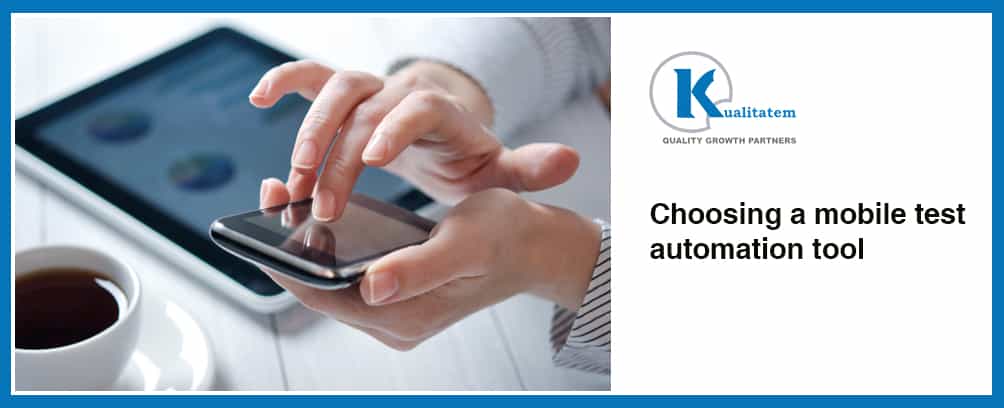Top 13 Features for Selecting a Mobile Automation Testing Tool

- December 5, 2014
- admin
It is no more a news that world is rapidly turning mobile. Statistics show mobile device usage rate is increasing quickly and it is just the matter of time before mobile devices take over the PCs. Therefore, more and more businesses are investing in mobile applications products to capture this huge consumer base. As the competition is high and tough, so it has become even more important to test your application from all functional, usability, and performance perspectives before launching it in App Store or Play Store!
Testing mobile application is lot more challenging as we have to make sure that Application works perfectly with hundreds of Mobile devices of different shapes, OS versions, capacities and hardware specifications. It is practically impossible to test every release of application on all of these devices. Best solution to cater all these challenges is Mobile Application Test Automation.
There are tens of Mobile Test Automation solutions available in market. Some are open source, others costs hundreds of dollars. Some come as cloud best solutions and some are just stand alone desktop tools. In this blog I will discuss some of the important factors that should be considered while selecting a mobile test automation tool.
Operating Systems Support:
If mobile application is being developed for IOS and Android platforms or there are future plans to do it then it is best to select a tool that can automate both IOS and Android apps. This will help in saving time and cost.
Application Type Support: Automation tool support for multiple application types is also be important. In most of the cases tools do not support native, hybrid and browser-based applications at the same time. So, if there are requirements to automate different type of applications then you will either have to choose multiple tools or look for a tool that supports all application types.
Supported programming languages:
Apart from selecting the right tool it is also important to consider the programming language it is using. It is better to select a tool which allow user to write scripts in multiple languages.
Source Code Requirement:
This is a very significant factor to consider, especially if you are providing independent testing services. In such cases, you most probably do not have access to source code because of contract agreements, security limitations etc. It is best to select a tool that has capability to automate app with or without source code.
Record & Play component:
Record & Play is a very handy feature as it allows test teams to quickly automate the scenarios. Even though this approach is not as powerful as programmatic approach but it is still good to have this feature as in some cases you need to have quick scripts.
Real Devices & Emulators:
Automation tool should have support for both Emulators and real devices. This is a must have feature for any mobile automation tool.
Read Devices on Cloud:
It is not economic for many companies to purchase large set of real devices for testing purposes. To solve this problem, many companies like Appthwack and Appurify have setup cloud based real devices labs. A good automation will be the one whose scripts can be easily run both on local as well cloud based real devices.
Touch Gestures Automation:
Mobile applications and games involve many touch and gesture based actions. Automation tool must have capability to record and automate such actions and gestures.
Object Recognition:
Automation tool should be able to identify unique objects to reduce the impact of changes and updates in application. If tool is using a good object recognition approach then it will be easy to maintain the scripts and object libraries.
Integration with third party tools:
To build a powerful automation framework we might need to use services and features of third party tools. A good tool will be the one that can be integrated with third party tools for revision control, execution management, test management and defect tracking etc.
Advanced automation features:
Built in features for data-driven testing, design pattern options, Wait functions and object libraries make the job of automation engineer easy. In long run, these features can play a big role in success or failure of any automation project. Most commercial tools offer these features by default but test teams have to develop these by themselves while working with open source automation tools.
Reports and Logging:
Test execution reports are the deliverable of automation tool. A detailed report with screenshots, failure points, reasons, exceptions etc. is better than just a simple PASS/FAIL report. Ability to create customized reports from different perspectives is also important.
Open Source vs. Commercial:
Commercial automation tools have advanced automation features and are comparatively easy to use but they come at a huge cost, normally ranging in thousands for dollars per license. On other hand open source tools are free but they have their own limitations. These limitations can be overcome by extra work from QA team. Making a choice between open source and commercial tool largely depends on available budget and QA team abilities.











